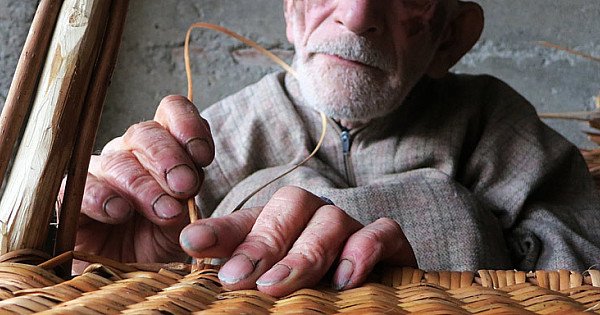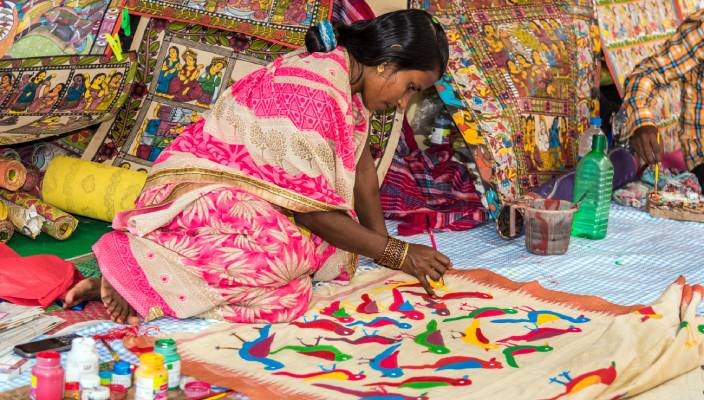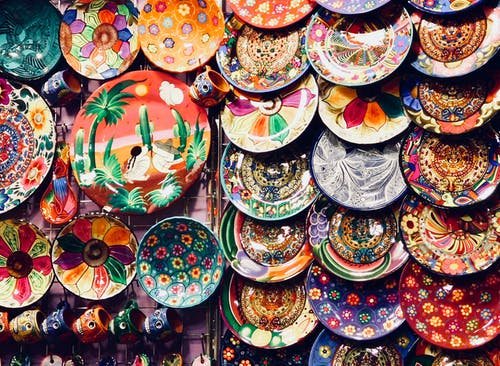In an age where digital design, automation, and imported goods dominate everyday life, a quiet yet powerful revival is taking place across the UAE. It’s not driven by flashy innovation or high-tech solutions—but by the *hands of artisans, the hum of ancient tools, and the pride of preserving *centuries-old Emirati traditions.
From weaving and pottery to metalwork and palm frond crafts, the UAE is experiencing a renaissance of its traditional handicrafts. These time-honored skills, once vital for survival and expression in the harsh desert climate, are now being reclaimed, reinterpreted, and revalued by new generations.
This is more than nostalgia. It’s a movement—an artistic and cultural awakening.

Why Handicrafts Matter in Emirati Heritage
Long before skyscrapers, supercars, and shopping malls came to define the UAE’s urban identity, craftsmanship was a way of life. It reflected both the resourcefulness and the creativity of the people, especially in a land where natural materials were scarce and the environment unforgiving.
For centuries, Emiratis relied on local materials like palm fronds, clay, wool, and metals to create *functional items—from water vessels and tents to fishing nets and bridal chests. These crafts were not only utilitarian but also deeply woven into *social customs, storytelling, and community pride.
Preserving these crafts is a way of safeguarding the intangible soul of the country—a bridge between the past and the present.
1. Al-Sadu Weaving: A Pattern of the Past Reimagined
Al-Sadu, the traditional Bedouin weaving technique, is perhaps the most emblematic of Emirati handicrafts.
Using wool from goats, sheep, or camels, women weavers would sit cross-legged on the ground, hand-weaving long strips of fabric with geometric patterns in bold reds, blacks, and whites. These were sewn into rugs, tents, camel saddlebags, and majlis cushions.
Al-Sadu was not just textile—it was *code. Each motif told stories of desert life, nature, and tribal heritage. The patterns were passed down *orally and visually, mother to daughter.
Today, thanks to organizations like the Emirates Handicraft Centre and UNESCO’s recognition in 2011 as Intangible Cultural Heritage, Sadu weaving is seeing a revival. Contemporary artists are incorporating it into fashion, furniture, and even digital design—honoring the past while weaving a new story.

2. Pottery: The Ancient Art Form Fired Anew
Pottery in the UAE dates back *thousands of years, as evidenced by archaeological finds in places like **Julphar, Ras Al Khaimah, and *Mleiha. Clay vessels were essential for storing water, dates, and grains in the pre-oil era.
What set Emirati pottery apart was its simplicity and resilience. The shapes were often rounded, with minimal decoration, designed to withstand the desert’s heat and sandstorms.
Today, while mass-produced ceramics dominate the market, hand-thrown pottery is making a comeback in workshops, art studios, and cultural festivals. Modern potters are blending traditional techniques with creative glazes, sculptural forms, and artistic themes.
At places like Abu Dhabi’s Bait Al Gahwa and Dubai’s Alserkal Avenue, you can take pottery classes, meet local artisans, and purchase one-of-a-kind handmade pieces.
3. Talli: Threads of Elegance
Talli embroidery is a delicate, intricate art form traditionally practiced by Emirati women. It involves braiding cotton or silk threads, often with gold or silver accents, into patterns used to decorate sleeves, collars, and hems of traditional women’s clothing.
The making of Talli requires *immense patience and skill, and each design has its own name—such as *“Bu Khosa” or “Zari”—passed down through generations.
Today, Talli has seen a fresh wave of popularity. Fashion designers are integrating it into abayas, scarves, and even handbags, blending old-world craftsmanship with modern flair.
Institutions like the Sharjah Institute for Heritage and the House of Artisans in Qasr Al Hosn have played a vital role in training younger generations and documenting the techniques.

4. Khoos: Crafting with Palm Fronds
Palm trees, the iconic symbols of the desert, offered much more than shade or fruit—they were also a source of *versatile raw material. From the fronds of the date palm, Emiratis crafted *baskets, mats, fans, and containers through a technique known as Khoos weaving.
These woven items were used in daily life—be it for fishing, cooking, or sleeping. Women were primarily responsible for this craft, often weaving in groups, making it both a practical and social activity.
Today, Khoos weaving is being revived through *design exhibitions and community workshops, where visitors can watch artisans work and even try their hand at it. Some contemporary eco-designers are using khoos techniques to create *sustainable home décor and fashion accessories.
5. Metalwork and Jewelry: Crafting Status and Beauty
Metalworking, particularly in *silver and brass, was historically linked with status and beauty. Skilled Emirati craftsmen forged *daggers (khanjars), incense burners, coffee pots (dallah), and intricate jewelry pieces like bangles, headpieces, and necklaces.
Each item was infused with symbolic meaning—whether as a rite of passage, a marriage gift, or a spiritual talisman.
While machine-made metals now dominate the markets, handcrafted metalwork is seeing new respect in art shows and collector circles. Young Emirati designers are creating bold, modern pieces using ancestral methods, often collaborating with local blacksmiths and jewelers.

The Role of Women in Preserving Heritage
Many of these crafts—particularly Sadu, Talli, and Khoos—were and still are preserved by *Emirati women. These were often *skills passed down through generations, learned in homes, majlises, or during social gatherings.
Today, many women-led initiatives and artisan cooperatives are working to *keep these traditions alive. Some are even turning their skills into **small businesses, supported by government programs or platforms like *Al Ghadeer UAE Crafts.
This revival is not only about preservation—it’s also about empowerment, identity, and economic independence.
Where to Experience Traditional Handicrafts in the UAE
To dive deeper into the world of Emirati crafts, here are a few must-visit places:
- House of Artisans (Abu Dhabi) – Located in Qasr Al Hosn, it offers live demonstrations, exhibitions, and workshops.
- Heritage Village (Dubai, Abu Dhabi, and Sharjah) – Reconstructed old villages where craftspeople work on-site.
- Sharjah Heritage Museum – Learn about the history and symbolism behind various crafts.
- Al Ghadeer UAE Crafts (Abu Dhabi) – A nonprofit that supports female artisans and sells handmade products.
- Annual Festivals – Events like the *Sheikh Zayed Heritage Festival, **Sikka Art Fair, and *Al Dhafra Festival regularly feature craft exhibitions and sales.

Crafting the Future, Respecting the Past
The revival of traditional crafts in the UAE is more than just a trend—it’s a cultural reclamation. It represents a *desire to reconnect with roots, **sustain unique identities, and *pass on wisdom to future generations.
In a globalized world where much feels mass-produced and disposable, these handmade items stand out—not just for their beauty, but for the stories they tell and the hands that made them.
So the next time you hold a handwoven basket, sip coffee from a clay mug, or run your fingers over a piece of embroidered cloth, know that you’re touching a living piece of Emirati history—still beating, still breathing, still being woven, one thread at a time.
Do follow UAE Stories on Instagram.
The History Behind the Majlis: UAE’s Traditional Gathering Space













